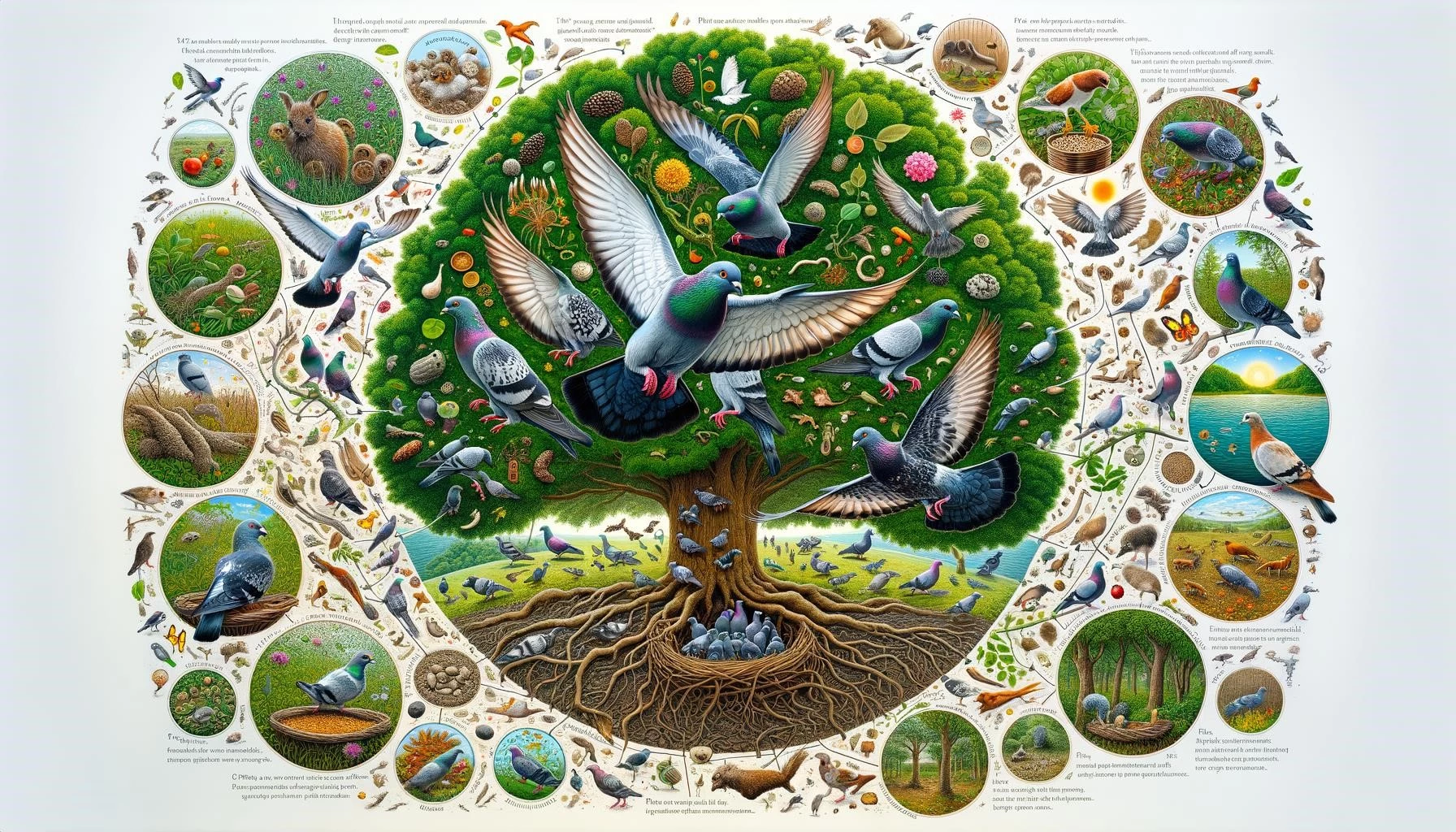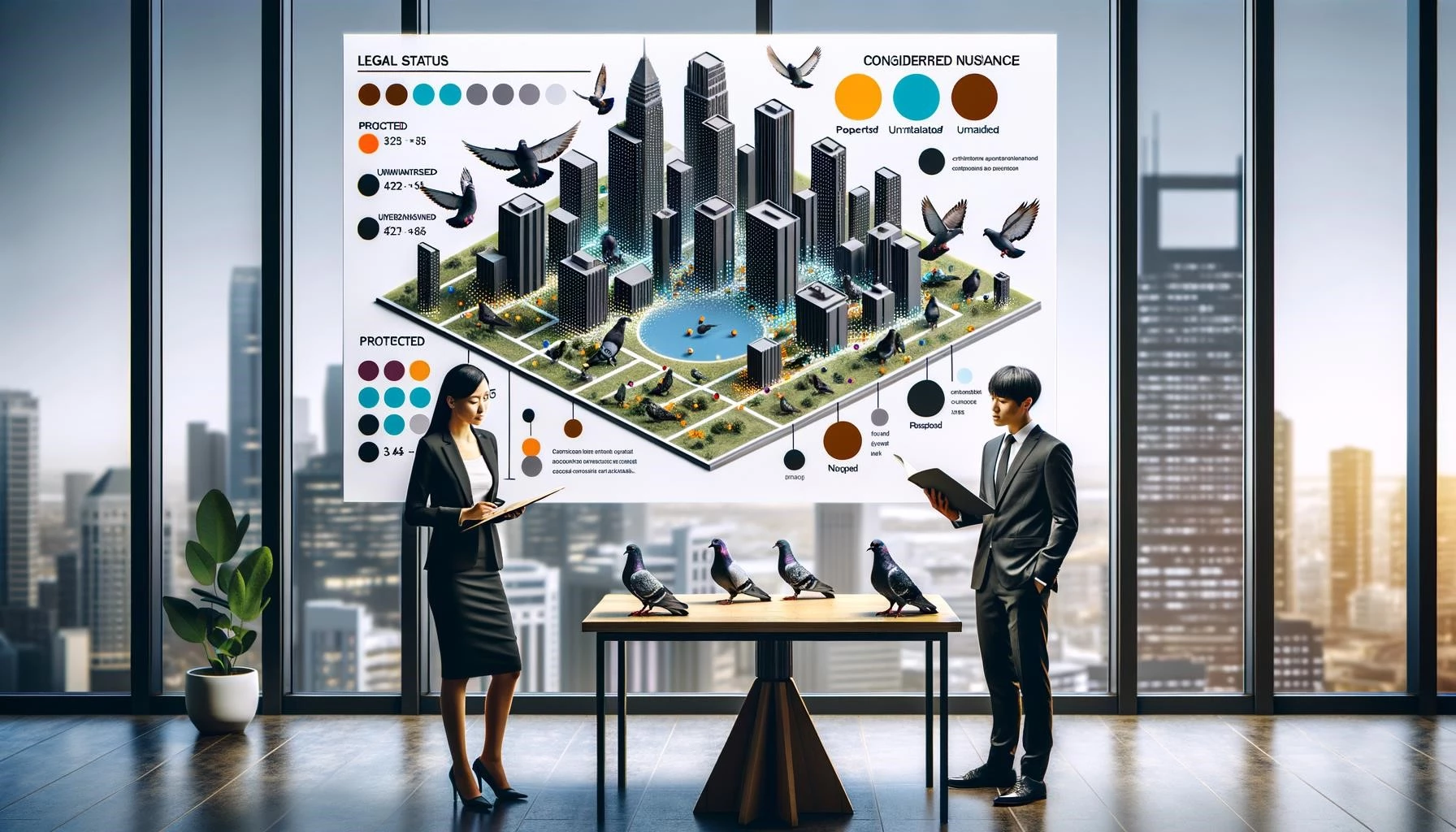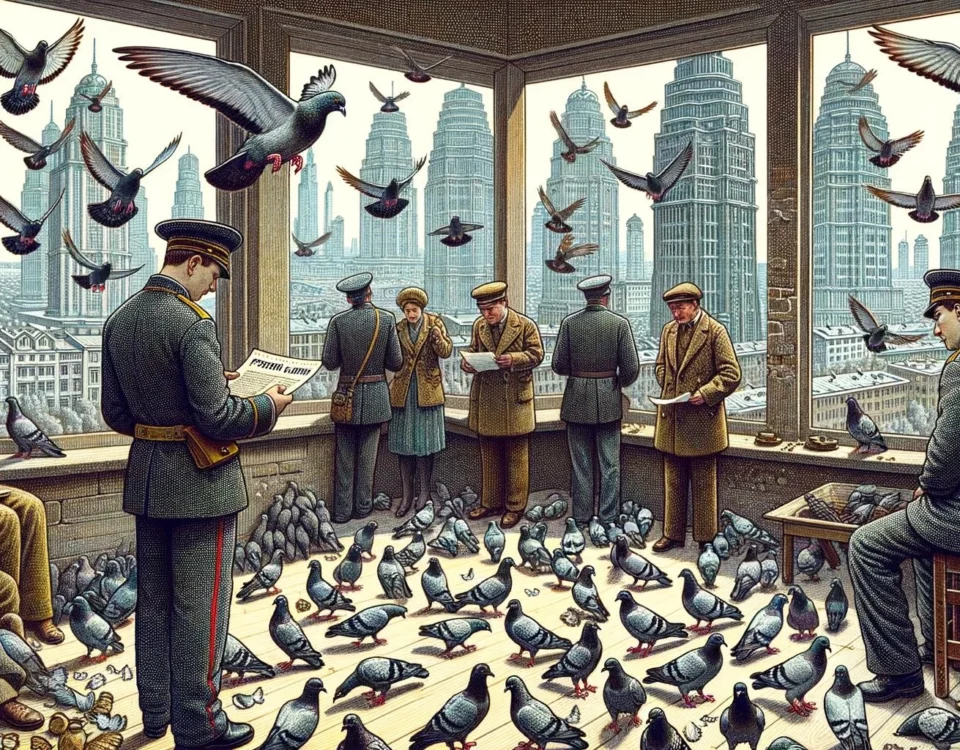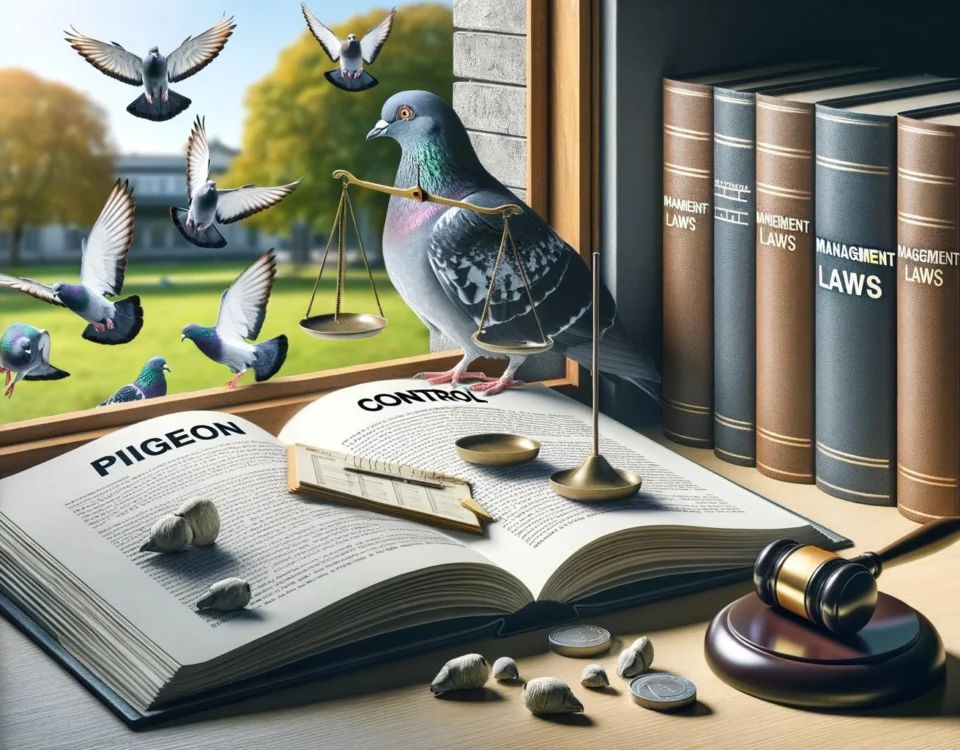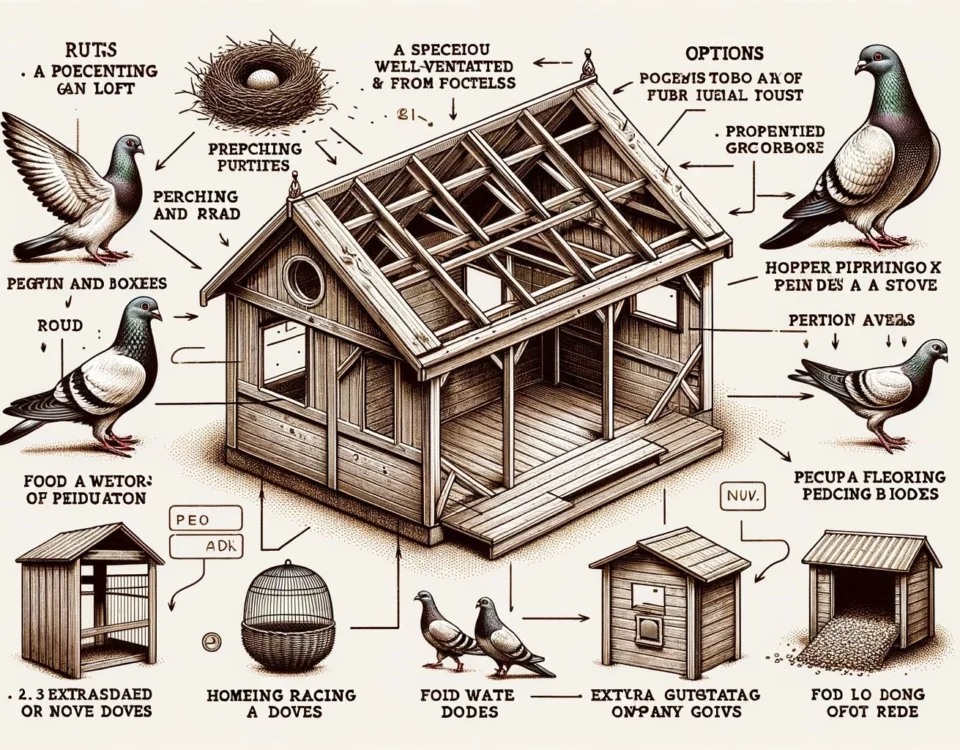Navigating the complex world of urban pigeon laws can feel like a minefield. From misconceptions about their legal status to regulations surrounding feeding and control methods, the laws are as varied as the cities they inhabit. This exploration uncovers the intricacies of these laws, revealing the importance of local rules, the impact of pigeon feeding regulations, and the critical role of urban pigeon management programs in fostering a balanced cohabitation with these city-dwelling birds.
Key Takeaways
- Feral pigeons are not protected by federal law in the United States.
- State and local laws regarding pigeon control and management vary, and it is important to consult them.
- Feeding pigeons and implementing non-lethal control methods may be regulated in certain jurisdictions.
- Lethal control methods for pigeons may be subject to additional laws and regulations.
- Many cities have implemented comprehensive pigeon management programs to maintain a balanced urban environment.
In urban areas worldwide, pigeons have become a common sight. These birds, often referred to as ″flying rats,″ have adapted well to city life and can be found in parks, on buildings, and even in crowded city squares. There is a common misconception that pigeons are protected by law due to their presence in urban environments. However, the reality is that the legal status of pigeons varies depending on the jurisdiction.
Above all, it’s important to note that feral pigeons are not protected by federal law in the United States. The Migratory Bird Treaty Act (MBTA), a federal law aimed at conserving migratory bird species, doesn’t extend protection to feral pigeons. While this law safeguards many bird species, pigeons are not included in the protected list under the MBTA.
That being said, it’s essential to be aware of state and local laws, as they can differ from federal regulations. Some cities are recognized as bird sanctuaries, providing protection to all bird species, including pigeons. Before undertaking any control measures, it is crucial to consult the applicable state and local laws in your area.
Regulations Regarding Pigeon Feeding
Feeding pigeons is a common activity in some urban areas, but it is important to know that feeding laws and regulations exist in certain cities. For example, feeding pigeons in public places may be prohibited or restricted in specific jurisdictions. Such regulations aim to manage and control pigeon populations and mitigate potential health and sanitation concerns associated with excessive bird feeding.
Pigeon Control Methods and Regulations
Regarding pigeon control measures, there are both non-lethal and lethal methods available. Non-lethal methods are typically encouraged because of their humane nature. These can include using deterrents like spikes, netting, or sound devices to prevent pigeons from roosting or nesting in certain areas.
It is crucial to note that lethal control methods for pigeons may be subject to additional laws and regulations. These measures, such as trapping or euthanizing pigeons, require careful consideration and compliance with local regulations to avoid unnecessary harm or cruelty.
Urban Pigeon Management Programs
To effectively manage and control pigeon populations in urban areas, many cities have implemented comprehensive pigeon management programs. These programs focus on proactive approaches to minimize conflicts between humans and pigeons. They aim to create a harmonious coexistence by implementing a combination of various strategies.
For instance, some cities have developed successful pigeon management programs that incorporate both non-lethal and targeted lethal control methods. These programs set goals to reduce pigeon populations, protect public health and safety, and minimize property damage caused by pigeons. Through a combination of reducing food availability, using deterrents, and targeted population control, these programs have achieved significant progress in maintaining a balanced urban environment.
In contrast, other cities prioritize community education and involvement in their pigeon management programs. These programs emphasize responsible food waste management, reducing artificial roosting spaces, and raising public awareness about pigeon behavior and coexistence. Through education and collaborative efforts, these cities are actively working towards long-term pigeon population control without resorting to lethal measures.
Preserving biodiversity in cities is vital for maintaining a healthy and functioning urban ecosystem. Pigeons, as adaptable birds, thrive in urban areas and can help create an urban environment that embraces wildlife diversity. By conserving pigeons and implementing effective management strategies, cities can experience the positive impacts of these birds, such as reducing pests and enhancing the urban greenery.
While pigeons are not protected by federal law, it’s essential to understand and comply with state and local laws regarding pigeon control and management. Feeding pigeons and implementing non-lethal control methods are regulated in various jurisdictions and should be approached responsibly. Urban pigeon management programs offer effective strategies for maintaining a balance between humans and pigeons, ensuring the coexistence of these adaptable birds with urban life.

